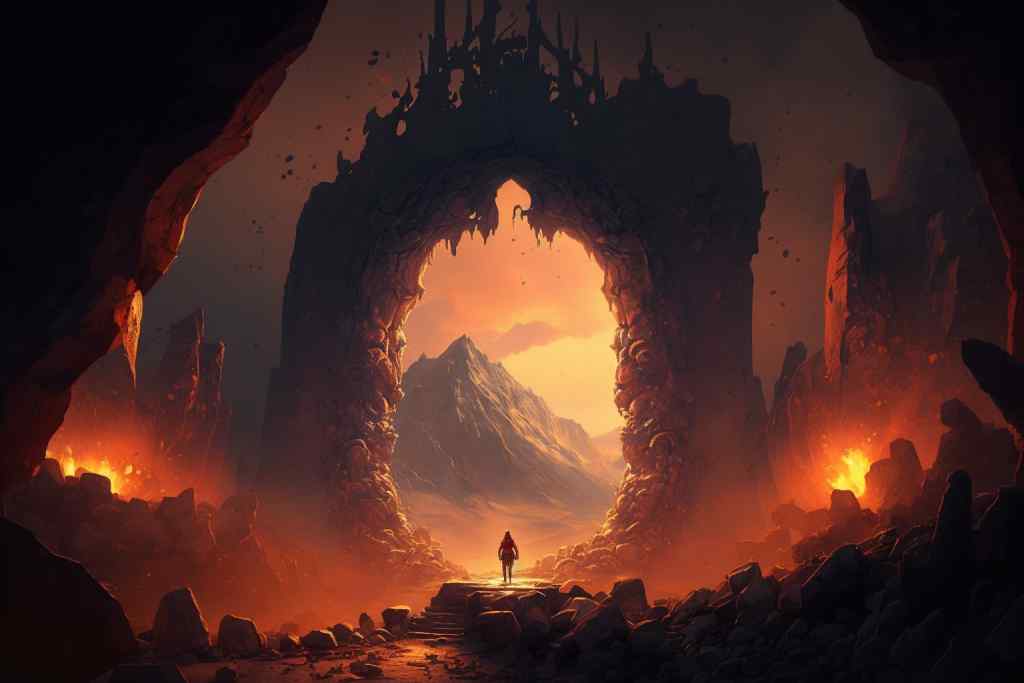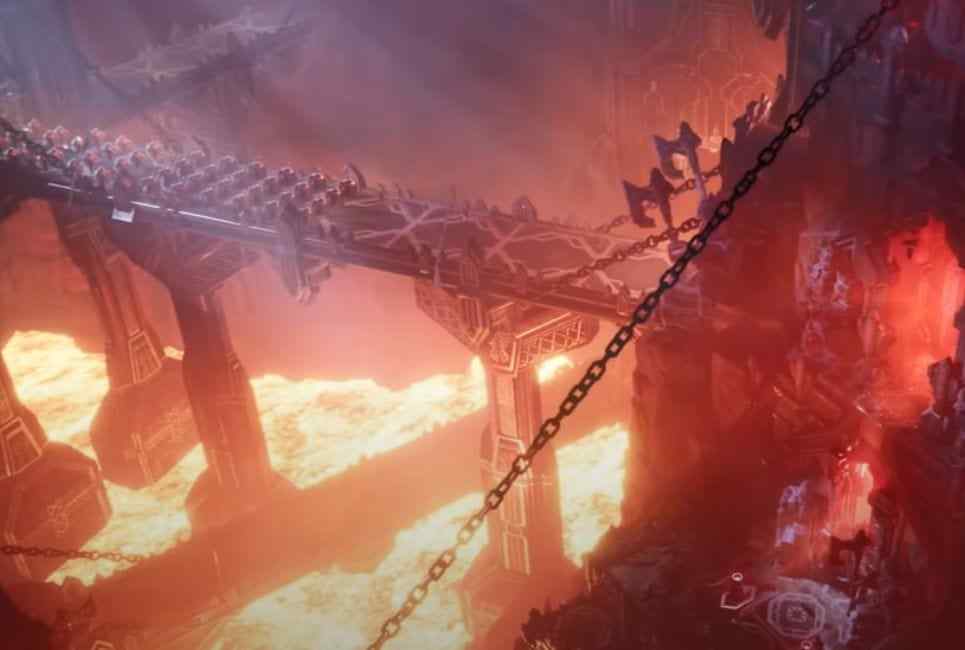You’ve been there before – your party is traversing a treacherous volcanic landscape, dodging fireballs and navigating narrow paths above flowing lava. The heat is intense, making every step a challenge, but the thrill of adventure fuels you onward.
But as the Dungeon Master (DM), how do you make this fiery scenario come alive in your D&D 5e game? It’s time to dive into the world of lava damage and learn how to properly implement it in your campaigns.
Welcome to Lava Damage 5e – The Ultimate Guide (2024). In this comprehensive guide, we’ll cover everything you need to know about incorporating lava damage into your games effectively and fairly.
From official rules and calculations to combat scenarios and resistances, we’ve got all the information you need to ensure that encountering molten rock becomes an exciting part of your players’ adventures.
So gear up for a heated journey as we explore the ins and outs of lava damage in D&D 5e!
Key Takeaways
- Lava damage in D&D 5e requires careful consideration and understanding of official guidelines to ensure fair and consistent management of encounters.
- Navigating volcanic landscapes requires resourcefulness and adaptability, with strategic movement and positioning being important in traversing treacherous terrain.
- Lava damage creates tension and urgency within encounters, with potential dangers lurking around every corner, encouraging imaginative solutions to traverse dangerous terrain.
- DMs should strike a balance between challenge and fairness when implementing lava damage, creating an environment where players feel challenged and rewarded, while keeping them engaged and testing their problem-solving skills.
Lava Damage in 5e

In 5e, experiencing lava damage is like getting hit by a fiery freight train. You’ll quickly learn just how deadly and diverse it can be.
As a player, it’s essential to understand the different types of lava damage your character may encounter in their adventures. From searing heat to molten rock, each type of lava hazard presents unique challenges that will test your abilities and force you to think creatively about how to escape unscathed.
Navigating the treacherous terrain of a volcanic landscape in D&D 5e can feel like an adrenaline-fueled race against time as you attempt to evade the various perils that await you.
Engaging with these dynamic environments requires resourcefulness and adaptability, which only serve to heighten the sense of freedom and accomplishment when you successfully overcome these obstacles.
So, embrace the challenge, prepare for the heat, and discover just how far your character can go when faced with the raw power of nature in its most destructive form.
Official Rules on Lava Damage in 5e
You’ll find that the official rules for searing hot molten rock in 5e can be quite intense, but we’re here to help you navigate them with ease.
Lava damage in Dungeons & Dragons 5th Edition can add a thrilling element to your adventures, giving players both risk and excitement as they traverse treacherous terrain or battle foes near volatile volcanic hazards.
With its potential to inflict massive damage, understanding the official guidelines on lava damage will ensure that you manage these fiery encounters fairly and consistently.
To help you make sense of lava damage in 5e, let’s break down the key points from the Dungeon Master’s Guide (DMG):
- Basic Lava Damage: A character who briefly comes into contact with lava takes 2d10 fire damage per round.
- Extended Exposure: If a creature is fully immersed in lava or spends an extended period of time touching it, they take a whopping 18d10 fire damage per round.
- Environmental Effects: In areas where extreme heat is prevalent due to proximity to lava flows or pools, characters might suffer levels of exhaustion based on their constitution saves according to DMG guidelines.
- Fire Resistance and Immunity: Characters with fire resistance reduce all fire damage by half, while those with immunity take no fire damage at all – essential factors to consider when determining survival chances amidst scorching surroundings.
By keeping these rules in mind during your next volcanic encounter, you’ll create engaging challenges that allow your players to experience the thrill of danger while testing their skills and resourcefulness against one of nature’s most unforgiving elements.
So embrace this opportunity for fiery adventure and let your imagination run wild as you craft scenarios filled with blazing hazards and smoldering suspense!
Calculating Lava Damage in D&D 5e

So, how do you accurately calculate molten rock damage in your D&D 5e campaign? It’s essential to consider the various factors and scenarios that can affect the outcome.
First, let’s discuss direct contact damage, which occurs when a character or creature is fully immersed in lava or touches it with part of their body.
In these situations, the DM typically rolls for damage based on the severity of contact and environmental conditions. For example, if a player accidentally falls into a pool of lava, they may take anywhere from 10d10 to 18d10 fire damage per round!
The intensity of this type of injury will depend on several elements like proximity to intense heat sources or wearing protective gear.
Next up is proximity damage – think about those moments when characters are merely near lava but not directly touching it. This type of situation still poses risks due to extreme temperatures radiating from the molten rock. DMs should assess how close players are to the lava and apply appropriate levels of heat-related damage.
You could have them roll for saving throws against Constitution or Dexterity checks depending on how agile their characters are at avoiding potential hazards while navigating around dangerous terrain.
Remember that creativity and flexibility in your approach as a DM can make your game more immersive and exciting; after all, who doesn’t want to feel like they’re defying death by daringly escaping an erupting volcano?
Embrace those exhilarating moments and keep your adventurers on their toes!
How Lava Damage Works in Combat
Battling amidst molten rock’s deadly embrace adds a thrilling layer of danger to any D&D 5e combat encounter, making every move a high-stakes gamble. As you weave through the treacherous landscape, you must carefully consider your actions and positioning to avoid getting caught in lava’s destructive path.
Knowing how lava damage works in combat is crucial for both players and Dungeon Masters (DMs) alike, as it can turn the tide of battle and lead to some unforgettable moments.
Incorporating lava damage into your combat encounters requires careful consideration, as the environment itself becomes a formidable adversary.
Here are some key points to keep in mind when dealing with lava hazards:
- Lava movement: Lava flows and shifts throughout the battlefield, forcing characters to adapt on-the-fly or risk being engulfed.
- Heat damage: Simply being near lava can cause significant heat damage, forcing players to balance their proximity with their need for tactical advantage.
- Terrain effects: The presence of lava can transform otherwise stable ground into difficult or even dangerous terrain, limiting mobility and altering tactics.
- Hazardous interactions: Spells or abilities that interact with fire or heat may have unexpected results when used near lava – sometimes advantageous but potentially disastrous.
- Environmental storytelling: The threat of encroaching lava creates tension and urgency within an encounter while also providing opportunities for creative problem-solving.
Mastering these aspects will grant you the freedom to fully explore this volatile terrain type in your campaign while offering up exhilarating challenges for your players.
Resisting Lava Damage in D&D 5e

In the perilous world of D&D 5e, it’s essential to find clever ways to withstand the scorching wrath of molten rock in combat. Damage resistance and immunities play a crucial role in your survival strategy when facing lava damage.
Spells and magical effects can be your best friend, offering protection against the intense heat or enabling you to walk unscathed on the deadly surface.
As a player, you must think creatively and take advantage of every tool at your disposal – your freedom from the fiery grip of lava depends on it.
When gearing up for an adventure where exposure to lava is likely, make sure to invest in protective equipment that can shield you from its devastating effects. Fire-resistant armor or items imbued with magical properties capable of warding off heat are just a few examples worth considering.
In addition, strategic movement and positioning will become more important than ever as traversing through treacherous terrain teeming with lethal molten rock becomes a matter of life and death.
Stay alert, remain adaptable, and above all else – embrace your desire for freedom from the clutches of searing lava by mastering every possible method to resist its unforgiving damage in D&D 5e.
DM Tips for Implementing Lava Damage
As a Dungeon Master, it’s crucial to balance challenge and fairness when incorporating scorching molten rock hazards into your D&D 5e campaign. Lava can be a thrilling and dynamic environmental hazard for players to overcome, but it’s essential not to overdo it or make it feel arbitrary.
To create an engaging experience for your players while maintaining a sense of danger and excitement, consider the following tips when implementing lava damage in your game.
Firstly, give your players ample warning about the presence of lava in the upcoming environment. This could be through descriptive narrative cues, rumors from NPCs, or even visible signs like smoke and steam rising from the ground.
Allowing them to mentally and strategically prepare themselves will give them that subconscious desire for freedom they crave—freedom to innovate their tactics and use their creativity to navigate this dangerous terrain.
Additionally, you can provide opportunities for clever solutions; perhaps there’s a magical item that offers fire resistance or an alternate route that’s more challenging but less hazardous.
By presenting options rather than forcing them into certain death scenarios, you’ll keep your players engaged while still putting their problem-solving skills to the test.
How Does Flying Impact Lava Damage?

Soaring above molten rivers might seem like a foolproof way to avoid getting scorched, but it’s not always a walk in the park.
When you or your players take to the skies using spells like Fly or Levitate, or perhaps by riding on the back of an airborne mount, there are still factors that can lead to lava damage even though you’re technically off the ground.
- Heat radiation: Lava radiates immense heat, and flying creatures or characters need to take into account how close they are to the molten surface. The closer they fly, the more likely they’ll suffer from extreme heat.
- Eruptions and lava splatter: Even if your characters maintain a safe altitude above lava flows, eruptions can send projectiles of molten rock skyward. A well-timed dodge may be necessary!
- Toxic gases: Volcanic areas often produce toxic gases that can cause harm when inhaled. Flying creatures should be cautious about staying within breathable air while traversing these hazardous zones.
- Limited flight duration: Most magical means of flight have limited durations; running out of time mid-air could result in plummeting into fiery doom below. Keep track of spell durations and plan accordingly!
Remember that as a DM, it’s essential to create an environment where your players feel challenged yet rewarded for their creativity – including finding alternative ways to traverse dangerous terrain such as lava fields.
Let them experience moments of freedom through imaginative solutions while keeping in mind the potential dangers lurking around every corner!





